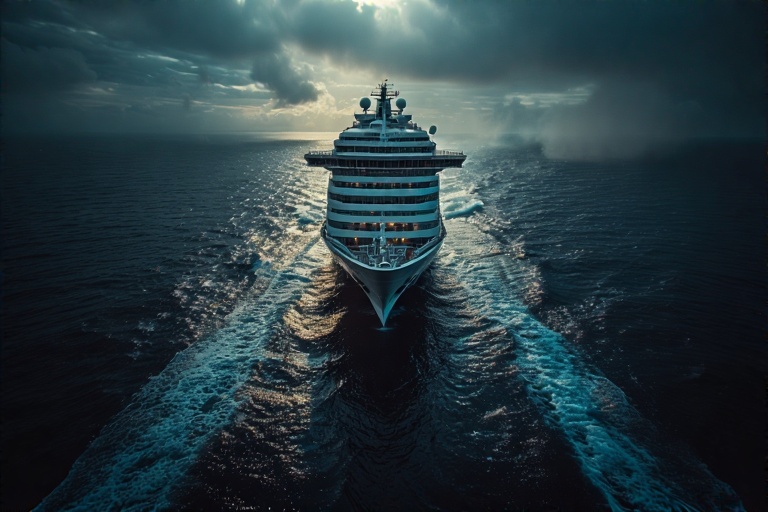Cruise Ship Passenger Sues Over Fall: What Happened?
In recent years, cruise ship accidents have drawn significant attention, with passengers seeking justice for injuries sustained onboard. One such case involves a cruise ship passenger who sued over a fall, raising questions about safety protocols, liability, and what truly happened. This article dives into the details of such incidents, focusing on the keyword cruise ship passenger sues over fall what happened, to provide clarity on these legal battles and their implications.
The Incident: What Happened?
Cruise ship falls are among the most common accidents reported on vessels, often resulting in severe injuries like fractures, concussions, or even long-term disabilities. In a notable case, a passenger filed a lawsuit against a major cruise line after a fall allegedly caused by hazardous conditions onboard. The plaintiff claimed the incident occurred due to a wet deck, poorly maintained walkways, or inadequate warning signs, which led to a slip and fall.
The passenger, whose identity remains confidential in many such cases, reportedly suffered significant injuries, requiring medical attention and ongoing care. The lawsuit alleges negligence on the part of the cruise line, asserting that the company failed to maintain safe conditions or warn passengers of potential hazards. These claims are central to understanding what happened when a cruise ship passenger sues over a fall.
Common Causes of Falls on Cruise Ships
Falls on cruise ships can occur for various reasons, including:
-
Slippery Surfaces: Wet decks from pool areas, rain, or spills are frequent culprits.
-
Poor Maintenance: Uneven flooring, loose handrails, or worn-out carpets can create tripping hazards.
-
Inadequate Signage: Lack of warnings for slippery or uneven areas increases risks.
-
Overcrowding: Busy areas like dining halls or entertainment venues can lead to collisions or falls.
-
Alcohol Consumption: Over-serving alcohol at onboard bars can contribute to passenger injuries.
In the case mentioned, the plaintiff’s legal team argued that the cruise line’s negligence directly caused the fall, a recurring theme in such lawsuits.
Legal Grounds for the Lawsuit
When a cruise ship passenger sues over a fall, the lawsuit typically hinges on negligence. To succeed, the plaintiff must prove:
-
Duty of Care: The cruise line had a responsibility to ensure passenger safety.
-
Breach of Duty: The cruise line failed to maintain safe conditions or warn of hazards.
-
Causation: The breach directly caused the fall and subsequent injuries.
-
Damages: The passenger suffered measurable harm, such as medical expenses, pain, or lost wages.
Cruise lines often operate under maritime law, which complicates these cases. Passengers must file claims within strict deadlines, often outlined in the fine print of their ticket contracts. In the referenced case, the passenger’s legal team likely navigated these complexities to build a strong case against the cruise line.
Cruise Line Response and Industry Impact
Cruise lines typically respond to such lawsuits by denying liability or arguing that the passenger’s actions contributed to the fall. For instance, they may claim the plaintiff was intoxicated, ignored safety instructions, or failed to exercise caution. In some cases, cruise lines settle out of court to avoid negative publicity, while others fight to protect their reputation.
The case of a cruise ship passenger suing over a fall highlights broader safety concerns in the cruise industry. High-profile lawsuits can pressure companies to improve safety measures, such as better deck maintenance, enhanced staff training, or clearer warning systems. These incidents also remind passengers to stay vigilant and report unsafe conditions immediately.
Passenger Rights and Steps to Take After a Fall
If you’re a cruise ship passenger injured in a fall, here’s what you should do:
-
Seek Medical Attention: Visit the ship’s medical facility and document your injuries.
-
Report the Incident: Notify the crew and ensure an official report is filed.
-
Gather Evidence: Take photos of the hazard (e.g., wet floor, broken handrail) and collect witness statements.
-
Consult an Attorney: Hire a maritime lawyer experienced in cruise ship injury cases.
-
File a Claim Promptly: Adhere to the cruise line’s deadlines, often as short as six months.
Understanding your rights is critical when navigating the aftermath of a fall. The passenger in the lawsuit likely followed similar steps to build a compelling case.
Why These Cases Matter
Lawsuits like the one involving a cruise ship passenger suing over a fall shed light on the importance of accountability in the cruise industry. Passengers invest significant time and money in their vacations, expecting a safe and enjoyable experience. When negligence leads to injuries, legal action becomes a tool to seek compensation and drive systemic change.
These cases also resonate with the public, as millions embark on cruises annually. Awareness of potential hazards empowers passengers to make informed decisions and advocate for their safety.
Conclusion
The question of what happened when a cruise ship passenger sues over a fall boils down to allegations of negligence, hazardous conditions, and the pursuit of justice. While each case varies, the core issue remains: cruise lines must prioritize passenger safety to prevent such incidents. For those affected, understanding their rights and taking swift action is crucial. As the cruise industry continues to grow, lawsuits like these serve as a reminder that safety must come first.
If you or a loved one experienced a similar incident, consult a maritime attorney to explore your options. Stay informed, stay safe, and ensure your next cruise is a worry-free adventure.
